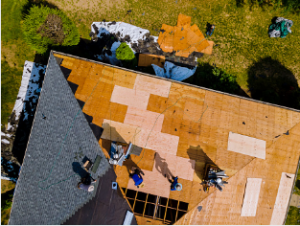Before calling a roofing contractor, you should regularly check your roof for any damage or leaks. While you cannot predict the exact date of a significant problem, you can prevent some problems and save money in the long run. After a storm, recheck your roof. If it’s still damp, inspect it. The same goes for the roof of your car. It could signify a leaking exhaust pipe or a damaged ceiling.
 Fixing a leaky roof
Fixing a leaky roof
In winter, a leaky roof is hazardous. First, you must identify the leak by looking for water sports and other signs of water damage. A slow leak can be difficult to notice, only occurring during heavy rains. To fix the leak, first, remove the suspect shingles. Then, look for water-stained wood and discoloured felt paper. If these signs are present, you can call a roofing repair expert.
A cracked shingle may be the culprit for the leak. If it is curled back, you can reseal it with asphalt roofing cement, which you can find in a caulk gun or at a home improvement store. When applying the cement, secure the edges and corners of the shingles. In warm weather, shingles can be more flexible, so it is a good idea to replace them if damaged.
Once you find the source of the leak, you must isolate the area. Using a flashlight, you can locate the leak using your roof’s light reflection. If you cannot find the source, it is best to call for assistance. Start by looking for a leaky roof during a rainstorm. Please bring a flashlight to see clearly, and use it to mark the spot on the roof where water is coming from. Next, apply roofing cement to the affected area. If necessary, replace shingles and rubber seals.
If you’re unable to call a roofing contractor immediately, the problem will only get worse. Even a simple leak may be an indication of a larger leak. If you don’t have the skills to repair a leaky roof, contact a roofing contractor for professional advice. With a bit of research, you’ll be able to determine if it’s worth it to spend money on a new roof.
Inspecting your roof for damage
When examining your home’s roof, you should look for cracks, water spots, and discolouration. This damage may be the result of a storm or age. Water damage can warp shingles and compromise exterior finishes. Additionally, a damaged roof can distort where it meets the exterior walls, causing costly repairs. To avoid this problem, inspect your roof at least once a year. This inspection will save you money and time in the future.
When inspecting the roof, pay special attention to air vents, seams, and joints. If you notice anything that looks like it has been damaged by wind, clean it and replace it if necessary. The same goes for the gutters. If you spot a leak, you should immediately contact your home insurance agent to discuss your options. You may find that you should have a professional roof inspection to avoid costly repairs.
Inspecting your roof for damage can also help you spot hidden roof problems. For example, you’ve likely leaked if you notice water spots or mould growth on your ceiling or siding. When you’re checking for damage, take photographs from the ground. Next, check your roof for visible signs of water damage, including leaks and leaking gutters. It would be best to look for water spots and damaged flashings. Even if you don’t see these signs, they can be a sign of a leak.
Choosing a contractor for roof repair
When choosing a roof repair SA contractor, make sure they are licensed. Not all states require licensed roofers. While Texas does not require a license, many do. It is essential to ask about a contractor’s experience, skill, and insurance credentials. You can also check online reviews or speak to other homeowners who have used the same company. In addition to checking their licenses, experience, and insurance, ensure you get a clear timeline for the project.